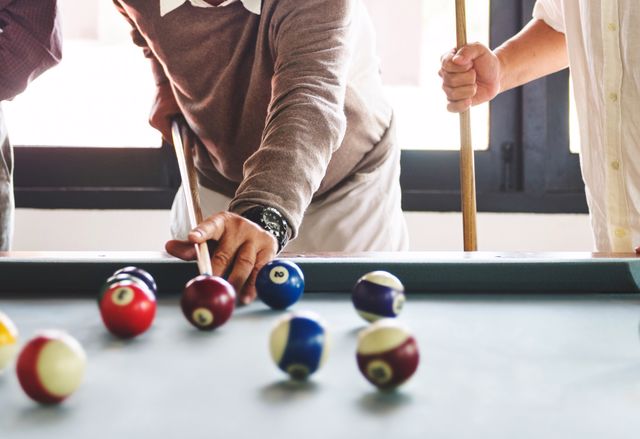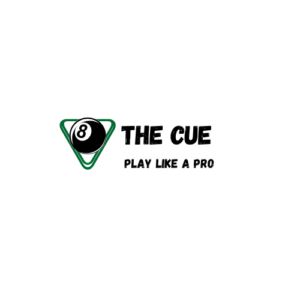Chalk is a dry powder that is used to make a line on the ground or pool table. It has been used since ancient times, and chalked lines can still be seen at many historical sites.
Chalk is traditionally made from limestone, which can be found in most parts of the world. The process for making chalk has changed over time, but it still involves mixing clay with water, lime, and sand.
The purpose of this question is to find out what an individual thinks about the use of chalk in pool cues.
The purpose of this question is to find out what the respondent thinks is the reason why people usually chalk their pool cues.
One of the reasons why people usually chalk their pool cues is to protect them from stains and other damage. Another reason could be that it helps with grip on the cue stick.
The last reason could be that it helps with visibility when playing a game in low light conditions.
Chalk is a very old and traditional way of marking a cue ball. However, it is not as popular as it used to be. Why do you chalk your pool cue?
The answer to this question lies in the history of the sport. The idea of using chalk on a cue ball came from the need for players to see where they are shooting their balls during play. It was also used to help reduce friction on the table by reducing surface tension on the cloth.
How often should you chalk your cue?
This question is often asked in the pool hall and people have different opinions about it. Some people say that you should chalk your cue every time before shooting and others say that you should only chalk your cue after every shot.
Some pool halls also have signs that tell players to chalk their cues at specific times during the game, such as after each break or after every shot.
Chalking your pool cue is a useful technique which helps prevent the cue from slipping and makes it easier to return the ball.
The best time to chalk your pool cue is before every shot. However, if you are playing with friends or you are playing at a house party, it is not necessary to chalk every shot.
Chalking your pool cue is a common practice that most players do to make sure they are hitting the cue ball with enough force. However, there is no set rule on how often you should chalk your cue.
Some professional players chalk their cues every game, while some others only need to do it after a few games. Chalking often depends on the type of surface you are playing on and how hard you hit the ball.
Can you play pool without chalk?
This is a question that most people ask themselves when they are trying to play pool without chalk. The answer is no, you can’t. But, you can use a different substance to play pool.
The best option is using a liquid like water or saliva.
The answer is no. You need chalk to play pool. Chalk is used to mark the lines on the pool table and helps you stay on track when you are shooting.
You can still play without chalk, but it’s not as easy as it sounds.
If you don’t have chalk, try using a dry-erase marker. It works just as well and is easier to clean up!
Yes, you can. There are a few different ways to play pool without chalk. One way is to use a cloth or towel instead of chalk. Another way is to use a felt-tip marker on the cue stick instead of chalk. And finally, you can use your fingers to draw the cue ball around the table and then wipe it off with your hand or towel when you’re done playing.
The first option might be more convenient for some people but others might find it difficult because they have difficulty drawing straight lines with their fingers. The second option might be better for people who are not confident in their hand-eye coordination but this also means that it’s harder to control how much chalk dust is on the felt tip marker, so it may not last long enough before needing a new one.
Can you over chalk a cue?
A pool cue is a stick with a rounded end at one end and a flattened, cylindrical shaft. It is typically made of wood, although some are made of fiberglass or artificial material. The cue stick is used to play billiards games.
The answer to this question depends on the type of chalk that you are using. Some types of chalk can be used repeatedly but others should be used sparingly because they will lose their effectiveness over time.
There is a lot of controversy about whether or not you can over chalk a pool cue.
Some people say that it is possible to over chalk a pool cue, while others believe that it can only be done once.
The truth is that you cannot over chalk a pool cue. The chalk allows the stick to slide easily across the cloth and gives you better control of your shots. The more chalk you put on the stick, the harder it will be for the ball to move around on the table, which makes it harder for you to control your shot.
Why is it important to apply chalk to the cue tip before a shot?
Chalk is a substance that is used in cue sports to improve the grip on the cue stick. It is sometimes also used as a lubricant for certain types of cues. Chalk can help reduce friction and prevent slippage.
It’s important to apply chalk before playing pool because it provides enough friction between your fingers and the cue stick so that you can easily control it.
It is important to apply chalk to the pool cue tip before a shot because it helps with the accuracy of the shot.
When you chalk your pool cue, it creates friction between the tip and shaft. This friction helps with accuracy by reducing any wobble in your stroke.
Some people use their fingers to create friction between their tip and shaft, but this can be messy and difficult for some people. The best way to apply chalk is by using a cloth or paper towel that has been wetted with water first.
Chalk is a white powder that is used to improve the performance of pool cues. It is applied to the tip of the shaft and gives players an advantage when shooting.
The chalk helps with consistency, accuracy, and speed. It also helps with grip while playing. The chalk can make your game more consistent by making it easier for you to focus on your stroke rather than trying to hold on to your cue stick. It can also help with accuracy by giving you better control over where you hit the ball. Lastly, it helps with speed because it allows for smoother strokes that are more accurate and consistent than without chalk.
What is the blue chalk used for in pool?
The blue chalk used in pool is a porous material that is used to mark the playing surface. It is also known as the “chalk line”.
The blue chalk lines on the pool table are generally set at 1/8″ or 3/16″ thick and are typically 3 feet apart. The chalk line is used to judge where balls must stop and to help players judge their shots.
The blue chalk is used for marking the boundaries of the pool. It is also used to mark the playing area and for scoring.
The blue chalk has been in use since the 1800s and was originally made from a mixture of clay, water, and sand. Nowadays, it is mainly made from a mixture of quartz, talc, and other minerals.
The blue chalk is used to mark the playing area of a pool game. It is also called the “blue stripe” or “blue band”.
The blue chalk will usually be made from plastic, rubber, or cloth. The cloth variety is most often used for billiards as it doesn’t absorb moisture and leaves a better mark.
How often should you scuff pool cue tip?
Scuffing the cue tip is a necessary step in the process of breaking in a new pool cue. This is done to remove any excess oils or resins that may have been applied during manufacturing and to expose the wood grain.
The general rule of thumb is that you should scuff your cue tip every time you break it in, but this can vary depending on the type of cue and how often it is used – so consult your local pool hall for more information.
This step helps to make sure that you are getting an even hit each time and also helps prevent any excess resin or oil from being absorbed into the wood grain, which can cause problems down the line.
How often should you scuff pool cue tip?
The answer is not as simple as it may seem. There are no set guidelines for when to scuff the pool cue tip, but there are good reasons to do so. It’s important to know the difference between a scuff and a break in order for your cue to last longer.
The answer to this question is not an easy one. If you want to know the answer, you need to understand the type of pool cue you are using and how it is made.
The most common cues are made from a composite material that has a smooth finish. These cues do not require much maintenance and can be used without worry of damaging the tip or shaft.
The most common cues are made from a composite material that has a smooth finish. These cues do not require much maintenance and can be used without worry of damaging the tip or shaft. However, if your pool cue is made with wood, then it needs more care and attention due to its natural properties of being porous, which allows water to seep in and cause damage overtime (this is why wood-made pool cues have a more limited life span than composite-made cues).There are many different types of cues, each with their own features.The most common type of pool cue is the straight cue. The shaft of a straight cue is made from one continuous piece of wood that follows the curvature along its length from tip to butt.
Other Articles You Might Enjoy Reading


